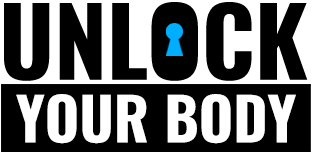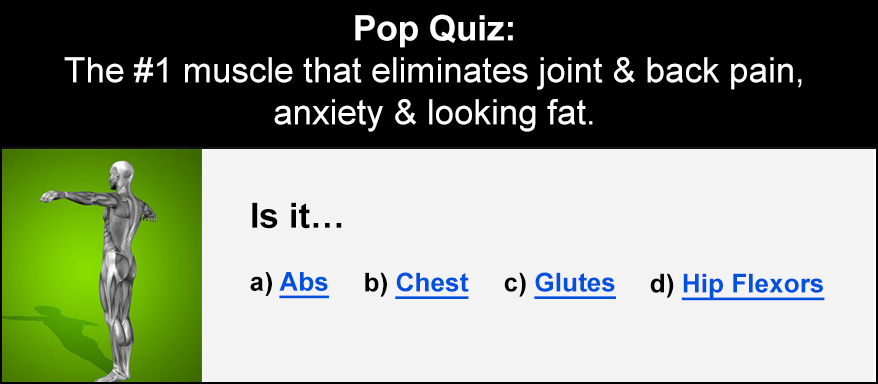Your back is one of the most difficult areas to train, especially for people who stand or sit for long hours during the day. Back pain is one of the most common issues among desk-bound workers. In fact, the U.S. Bureau of Labor Statistics reports that more than 40% of Americans between the ages of 25 and 54 experience back pain each year. Chronic spine and back pain can be an incredibly debilitating condition. It can have an impact on your ability to carry out normal activities, your ability to work, and your quality of life overall. Thankfully, there are exercises that can help to relieve chronic spine and back pain and help you to live a more comfortable and active lifestyle.
Here are several ways to prevent and ease chronic spine and back pain at work. The best way to do this is by performing specific exercises that target your back muscles and keep them strong throughout the day. Going through a few simple back exercises each day should be enough to alleviate stress on your spine, strengthen your core, and help you recover from any potential injuries faster.

The Spine: The Center of Your Body
The spine is the center of our body, making it one of the most vital parts of the body. It connects your shoulders to your hips and supports your head and neck. A healthy spine keeps your body balanced and helps you move more easily.
One part of the spine that affects posture is the back. Good posture is important for good spinal health. If you slouch or hunch over your desk all day, it can cause problems for your back. Other common issues are kyphosis (a rounded-back position), lordosis (an inward curve in the mid back), and scoliosis (abnormal sideways curvature of the spine). People with low back pain usually have one or more of these issues.
Other parts of the spine include the vertebrae, discs, and ligaments. Spinal anatomy can be complicated, so it’s best to get a professional opinion before starting any treatment.

Sedentary Lifestyle
A sedentary lifestyle is a term used to describe an everyday life characterized by prolonged sitting or lying down. Sedentary people typically spend most of their day sitting in front of a computer, watching TV, or driving in the car.
Do you realize how much time you spend sitting at work compared to the time you spend being active or exercising? This comparison should leave you concerned. Sedentary lifestyles weaken your core, leading to back injuries even if you exercise regularly.
Many professionals spend a lot of time sitting down. We habitually slouch at our workstations. Ultimately, we commonly neglect our backs, resulting in chronic back issues. Sitting for long periods can lead to many health problems, including obesity, high blood pressure, and heart disease. It can also lead to chronic spine and back pain and other injuries. Although it may be tempting to sit on the couch all day, there are many benefits to getting up and moving around regularly. Studies have shown that being active can improve mental focus and help with weight loss.
Additionally, exercise has been shown to improve quality of life by reducing stress levels and helping to relieve depression symptoms. The bottom line is that staying active is better for your overall health.
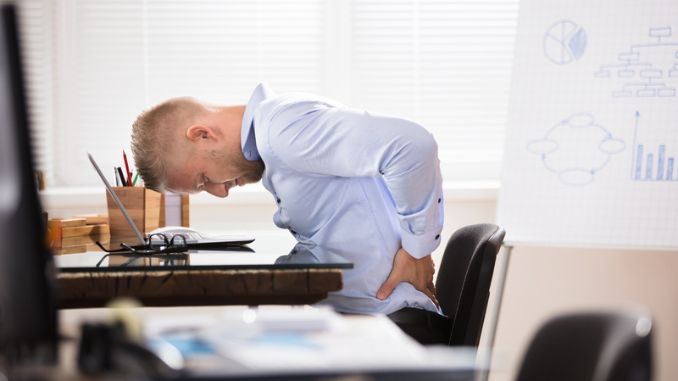
Chronic Spine and Back Pain
If you have chronic spine and back pain, it’s important to stay on top of your pain management.
Chronic spine and back pain, also known as chronic musculoskeletal pain, is all too common. In the United States, it is estimated that more than 50 million people suffer from CBP at any given time.
The good news is that CBP can often be successfully treated, and many different types of treatments are available to help manage the condition. However, if left untreated, CBP can impact your quality of life and lead to further complications. CBP can cause both short-term and long-term pain and discomfort. It may cause you to feel stiff or sore, or a tingling or burning sensation when you are certain body parts.
Though there is still much to learn about CBP, it is now thought that a variety of factors can be to blame. This includes:
- Genetics
- Underlying Joint Issues.
- Poor posture
- Trauma to the Spine or Other Joints
- Damage to the Muscles or Nerves in the Lower Back
- Degenerative Disc Disease
- Misaligned Vertebrae in the Spine
- Interference with Spinal Nerve Signals
- Psychological Issues Like Low Self-Esteem or Depression
How Can Back Pain or Spine Issues Affect Your Everyday Life?
Your back pain or spinal issues can make everyday activities like sitting, standing, climbing stairs, and lifting objects more difficult or painful. They can also cause you to take longer to complete tasks and may make it harder for you to stay active.
Your back pain or spinal issues may affect how others see you. For example, they may notice that you are slouching or that your movements seem stiff and awkward. These behaviors may make it harder for other people to relate to you and make them less likely to include you in many activities.
Back pain or spinal issues can also affect how you feel about yourself. For example, if your back pain or spinal issues are caused by poor posture or arthritis, they may make you feel old or like your body is failing. This can also lead to a decline in your mental well-being.
It’s time for you to take your fitness routine to the next level. Are you prepared to take it seriously and do it for your health?

What Can You Do to Keep Your Back or Spine Healthy?
- Exercise Regularly. Do chair exercises that target your back or spine for at least 5 to 7 minutes daily.
- Use Back Support. Using a cushion, pillow, rolled-up towel, or lumbar support while working or driving a car helps keep your spine in better alignment.
- Don’t Slouch. In addition to causing bad posture, slouching can stress your spine by putting more weight on one side of the body than the other. It’s also important to ensure you’re not overusing a certain muscle group. For example, don’t lift heavy objects or carry groceries for long periods if you have chronic spine and back pain. Instead, use exercise bands or resistance bands, which allow you to target specific muscles.
- Avoid Putting Too Much Strain on Your Back or Spine. This is especially important when lifting heavy objects or bending over for a long period of time.
- Get Enough Quality Sleep. People who get less than 7 hours of sleep per night are more likely to develop back pain or other health problems. So make sure you’re getting enough sleep each night.
- Try to Avoid Sitting for Long Periods. Instead, get up and move around throughout the day.
- Stay Hydrated. This helps you maintain a healthy weight and keeps your blood pressure under control. Drinking enough water helps maintain the right fluid balance in and out, which is critical for maintaining good spine health.
- Maintain a Healthy Weight. Being overweight puts extra strain on your back, so try to maintain a healthy weight especially if you have low back pain. Also, be aware of any changes in your spine, such as curvature, which may indicate that your weight is too high.
These tips will help keep your back or spine healthy and strong!

Seated Desk Exercises to Strengthen Your Core and Give You Back Pain Relief
Regular back exercises can improve your posture and reduce your risk of injury. It can also ease pain and stiffness. Strengthening and stretching exercises are highly recommended, and can be done at home, in the gym, or outdoors. If you have concerns about your back, it’s best to talk to your doctor before starting any exercise program.
1. Cat-Cow
Begin by sitting upright on the front of your desk chair with your feet flat on the floor, hip-width apart. Maintain good alignment with your head, shoulders, and hips. Rest your hands on your thighs. Tighten your abdominal muscles. Take a deep breath, then slowly look upward as you arch your back. Exhale, then round out your mid-back as you slowly lower your head towards your chest. Hold each position for a few seconds. Repeat the sequence of movements for about 5 to 10 repetitions.
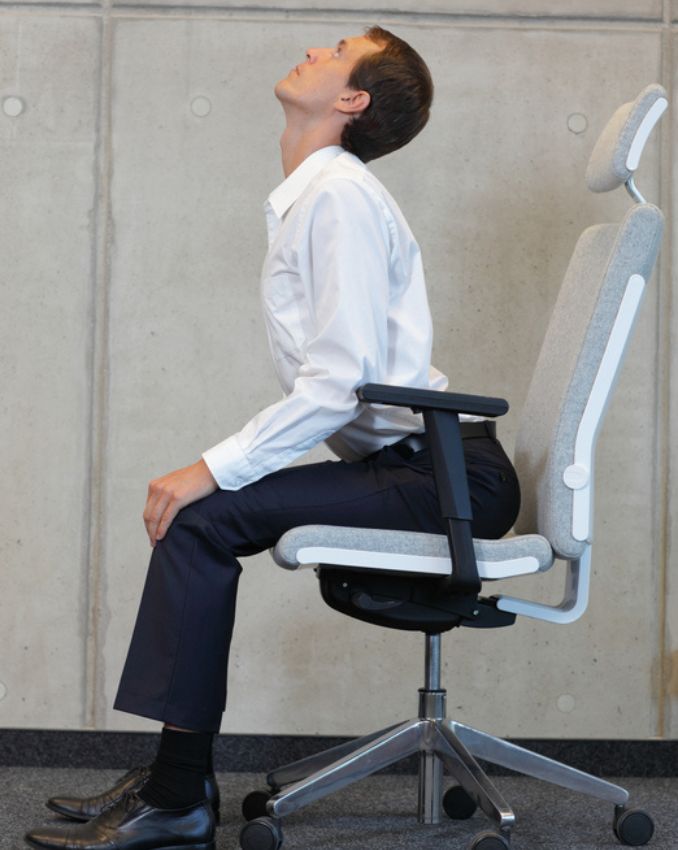 |
 |
2. Overhead Back Arch
Begin by sitting in an upright position on the front of your desk chair with your feet flat on the floor, shoulder-width apart. Maintain good alignment with your head, shoulders, and hips. Tighten your core, hinge your hips to bend your upper body forward, and extend your arms behind your lower back. Sit back up as you sweep your arms overhead, arching your back and focusing on the stretch happening in your lower back area. Hold this position for 10 to 20 seconds, then return to the starting position. Repeat the sequence of movements for about 5 to 10 repetitions.
 |
 |
3. Hip Rocking
Begin by sitting upright on the front of your desk chair with your feet flat on the floor, hip-width apart. Maintain good alignment with your head, shoulders, and hips. Rest your hands on your thighs. Tighten your abdominal muscles. Move your pelvic bone forward, then scoop it back, feeling the stretch in your pelvic tilt. Hold this position for several deep belly breaths, then relax. Repeat the sequence of movements for about 5 to 10 repetitions.
 |
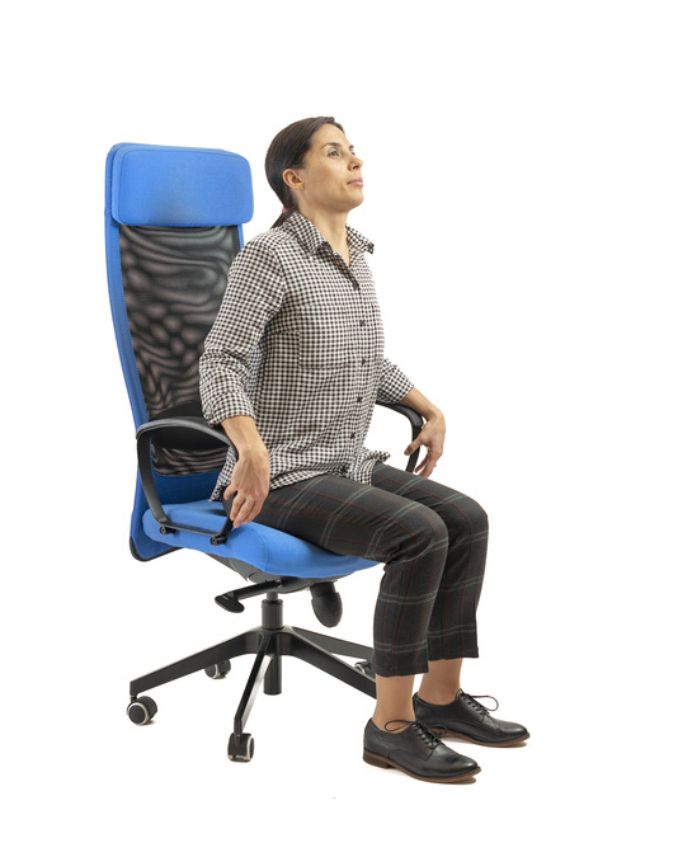 |
4. Cross-Body Arm Reach
Begin by sitting upright on your desk chair with your feet flat on the floor, hip-width apart. Maintain good alignment with your head, shoulders, and hips. Tighten your abdominal muscles. Reach across your chest with one arm and use your opposite hand to push your arm closer to your body, intensifying the stretch. Hold this position for several deep belly breaths. Relax and repeat the movement on the opposite side.

Exercising regularly isn’t solely about getting in shape. Being fit is important, but there are other benefits to exercising regularly. Exercise can help you improve your balance, boost your mood, relieve your stress, increase your concentration, and decrease your chances of future injuries.
Make sure that your workout is pain-free. If you experience pain when exercising, stop immediately and reassess your routine. It is also advisable to consult with your doctor. Your spine simply cannot benefit from a sedentary lifestyle. Try doing these desk exercises twice daily to maintain a healthy spine.

